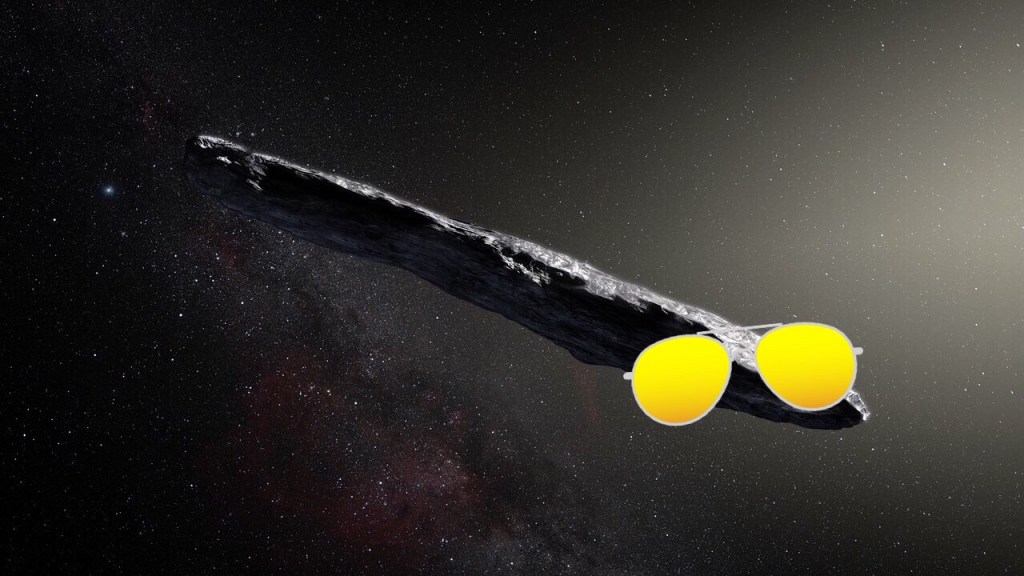For the first time, astronomers have spotted an interstellar object passing through our solar system, according to research published Monday in Nature.
The visitor is a reddish, cigar-shaped asteroid, initially detected on October 19 by the Pan-STARRS1 telescope atop the volcano Haleakala in Maui, Hawaii. Measuring about a half-mile across, the object’s popular name, ‘Oumuamua, translates to “messenger” in Hawaiian. Its scientific name, 1I/2017 U1, is the first asteroid designation to include an “I” for interstellar, paired with the number 1 to signify its unprecedented status.
Videos by VICE
Led by Karen Meech, an astronomer at the University of Hawaii’s Institute for Astronomy, the paper’s authors describe the elongated shape of the interstellar asteroid as “very unusual.”
“What we found was a rapidly rotating object, at least the size of a football field, that changed in brightness quite dramatically,” Meech said in a statement. “This change in brightness hints that ‘Oumuamua could be more than 10 times longer than it is wide—something which has never been seen in our own solar system.”
When this alien traveler was pinpointed by Pan-STARRS1 a month ago, it had already zoomed past the Sun, and was speeding by Earth at a distance of about 15 million miles (24 million kilometers).
Astronomers capitalized on its proximity, and organized rapid follow-up observations at three Mauna Kea facilities, the Canada-France-Hawaii Telescope, the United Kingdom Infrared Telescope, and the Keck Telescope.
Recent trajectory of ‘Oumuamua. GIF: European Southern Observatory (ESO)
The Gemini South telescope and the European Southern Observatory’s Very Large Telescope, both located in Chile, are also tracking the asteroid as it races out of the outer solar system at around 98,400 miles (158,360 kilometers) per hour, relative to the Sun.
Beyond the fact that it came from interstellar space, ‘Oumuamua’s origins are unclear. But its sheer existence suggests that transfer of celestial objects between star systems is more common than previously thought, and there may well be many other interstellar objects, or ISOs in our midst.
Read More: How Humans Will Finally Reach Interstellar Space
“The ‘Oumuamua discovery suggests there are likely additional ISOs in our solar system at any given time and raises the tantalizing prospect of many future ISO discoveries,” according to the Nature paper. “These objects will enable the measurement of elemental abundances in other solar systems and test planetary formation theories.”
Get six of our favorite Motherboard stories every day by signing up for our newsletter.




